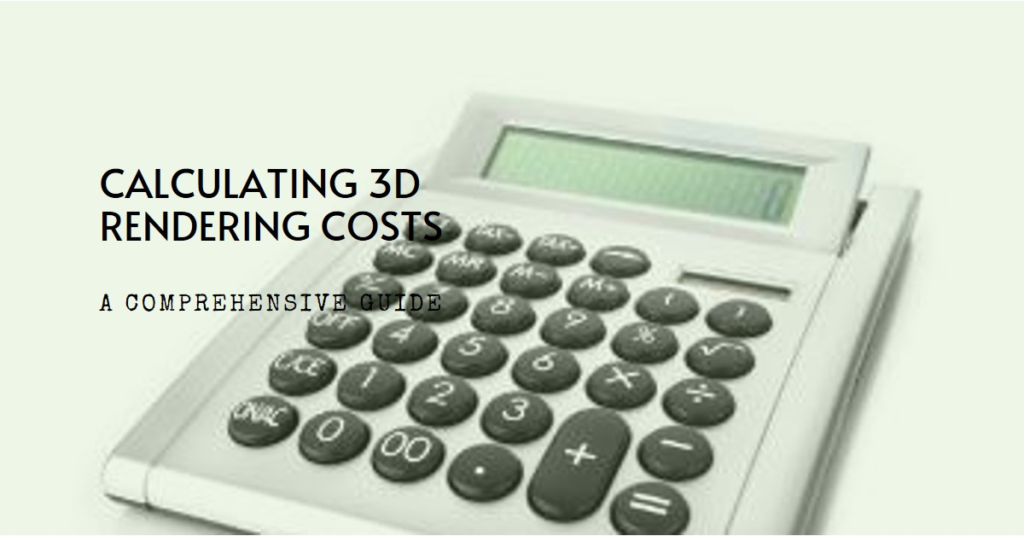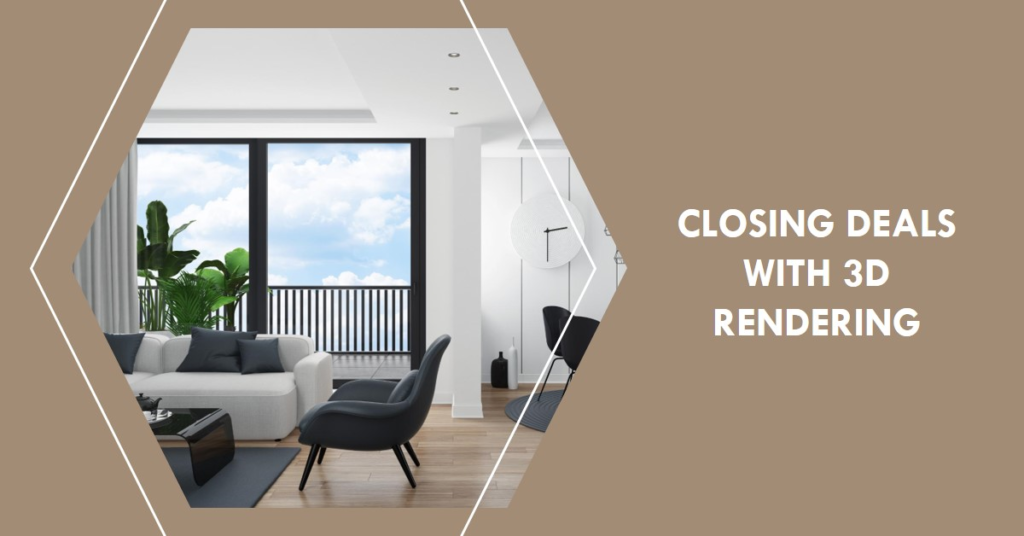
Table of Contents
1. Introduction: The Economics of 3D Rendering
In the world of architecture, interior design, product visualization, and beyond, 3D rendering has become an essential tool for bringing concepts to life. However, one common question that arises when considering 3D rendering services is, “How are the costs calculated?” In this comprehensive guide, we will delve into the intricacies of 3D rendering pricing, exploring the factors that influence costs and shedding light on the methods used to calculate them.
2. Complexity of the Project: From Simple to Complex
The complexity of the project is one of the primary factors that influence the cost of 3D rendering. A simple rendering of a small interior space with minimal details will naturally require less time and resources compared to a complex architectural visualization of a large-scale building with intricate design elements and landscaping. As the complexity of the project increases, so does the level of skill, expertise, and time required from the 3D artist or studio. Therefore, clients can expect to pay higher fees for projects that demand more intricate detailing, realistic lighting, textures, and advanced visual effects.
3. Time and Labor: The Hours Invested
Time is money, as the saying goes, and the same holds true for 3D rendering projects. The amount of time and labor invested by 3D artists directly impacts the overall cost of the rendering. Factors such as the size and scope of the project, the level of detail required, and the turnaround time requested by the client all influence the number of hours needed to complete the rendering. Additionally, the skill level and experience of the 3D artists involved may also affect the pricing, with more seasoned professionals commanding higher rates for their expertise and efficiency. Clients should be mindful of the time and labor involved in their project when negotiating pricing with 3D rendering service providers.
4. Software and Tools: Investing in Technology
The software and tools used for 3D rendering play a significant role in determining the overall cost of the service. High-quality rendering software and advanced tools are essential for achieving realistic and visually stunning results, but they often come with a price tag. 3D rendering studios must invest in licensed software, plugins, and hardware equipment to ensure optimal performance and output quality. These investments contribute to the overhead costs of running a rendering studio, which are factored into the pricing of their services. Clients should inquire about the software and tools used by rendering service providers to ensure they are getting the best value for their investment.
5. Revisions and Iterations: Fine-Tuning the Details
In many cases, clients may request revisions or iterations of the initial rendering to fine-tune the details and achieve their desired outcome. While some revisions may be included in the initial quote, additional revisions beyond the agreed-upon scope of work may incur extra costs. Revisions can range from minor adjustments to major changes in design, layout, or materials, and each iteration requires additional time and effort from the 3D artists. Therefore, clients should communicate their requirements clearly upfront and be prepared to provide timely feedback to minimize the need for extensive revisions and avoid unexpected costs.
6. Rendering Resolution and Output Formats: Quality Matters
The resolution of the final rendering and the desired output formats are important considerations that can impact the overall cost of the project. Higher resolutions and more complex output formats, such as animations or virtual reality experiences, require additional rendering time and resources to produce. Additionally, clients may have specific requirements for the resolution and format of the final deliverables based on their intended use, such as print publications, digital marketing materials, or presentations. 3D rendering service providers may offer different pricing tiers based on the resolution and output formats requested by the client, allowing clients to choose the option that best fits their needs and budget.
7. Licensing and Usage Rights: Understanding Ownership
Another factor that can affect the cost of 3D rendering services is licensing and usage rights. Clients should clarify with the rendering service provider whether they will have exclusive or non-exclusive rights to use the final renderings and how they can be used. Exclusive rights typically command higher fees since the client gains sole ownership of the renderings and can use them without restrictions. Non-exclusive rights, on the other hand, allow the rendering service provider to retain ownership of the renderings and license them to multiple clients, which may result in lower costs for the client. Clients should carefully review the terms of the licensing agreement to ensure they understand their rights and limitations regarding the use of the renderings.
8. Additional Services and Add-Ons: Tailored Solutions
In addition to standard rendering services, clients may also have the option to request additional services or add-ons to enhance their project. These may include services such as virtual staging, photorealistic landscaping, interior design consultation, or custom animations. While these add-on services can add value to the final deliverables, they may also incur extra costs depending on the scope and complexity of the requested services. Clients should discuss their specific requirements with the rendering service provider and inquire about any additional services or add-ons that may be available to meet their needs.
9. Geographic Location: Cost of Living Variations
The geographic location of the rendering service provider can also influence the cost of 3D rendering services. In regions with a higher cost of living or where the demand for 3D rendering services is greater, prices may be higher to reflect the increased operating expenses and market demand. Conversely, in regions with a lower cost of living or where the competition among rendering service providers is less intense, prices may be more competitive. Clients should consider the geographic location of rendering service providers when comparing pricing and selecting a provider that offers the best value for their budget.
10. Conclusion: Navigating the Pricing Landscape


In conclusion, understanding how 3D rendering costs are calculated requires careful consideration of various factors, including the complexity of the project, time and labor involved, software and tools used, revisions and iterations, rendering resolution and output formats, licensing and usage rights, additional services and add-ons, and geographic location of the rendering service provider. By familiarizing themselves with these factors and communicating their requirements clearly with rendering service providers, clients can navigate the pricing landscape more effectively and make informed decisions that align with their budget and project goals. Ultimately, investing in high-quality 3D rendering services can yield impressive returns by enhancing presentations, attracting clients, and bringing concepts to life in vivid detail.


